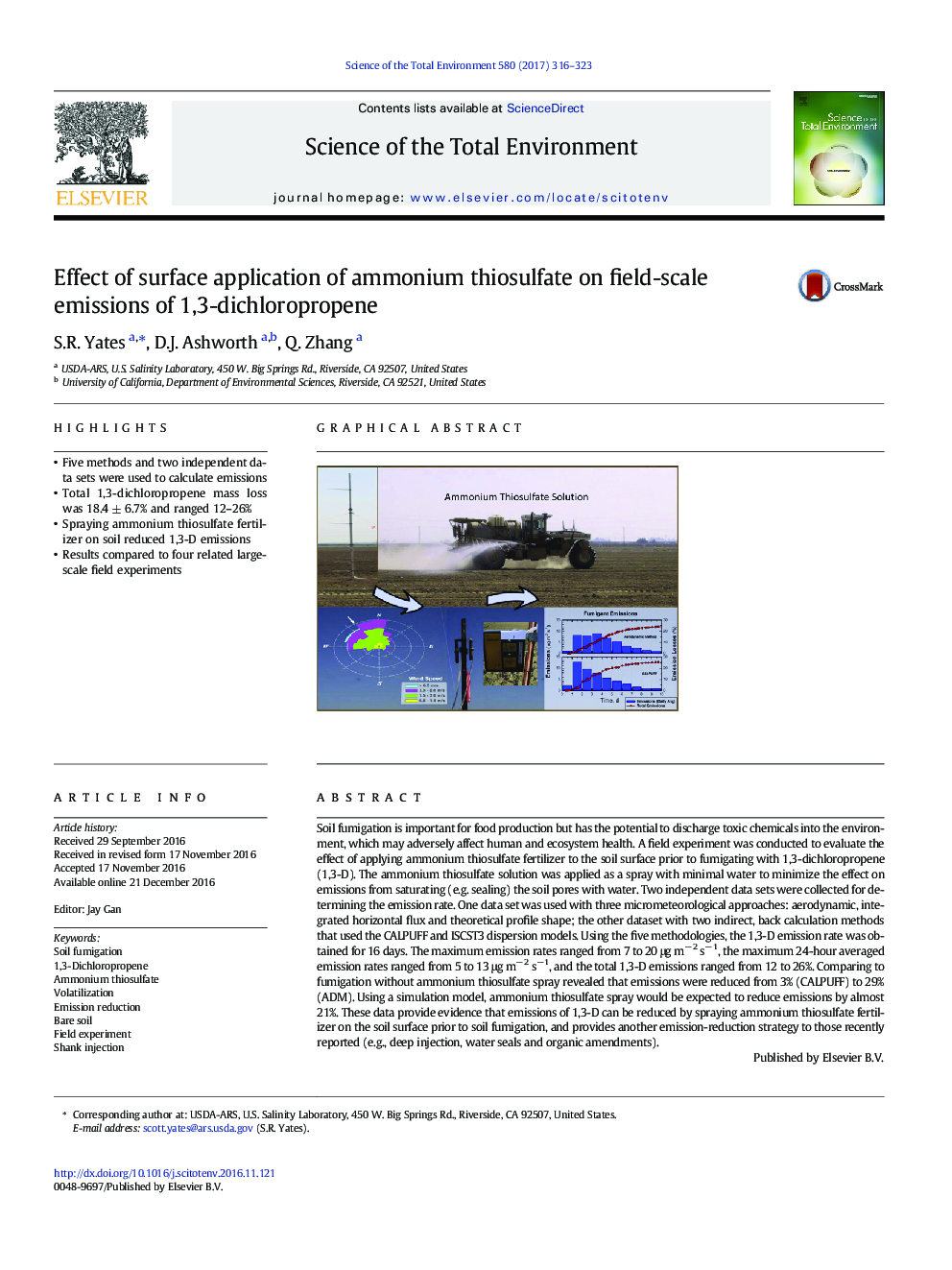| کد مقاله | کد نشریه | سال انتشار | مقاله انگلیسی | نسخه تمام متن |
|---|---|---|---|---|
| 5752074 | 1619711 | 2017 | 8 صفحه PDF | دانلود رایگان |

- Five methods and two independent data sets were used to calculate emissions
- Total 1,3-dichloropropene mass loss was 18.4 ± 6.7% and ranged 12-26%
- Spraying ammonium thiosulfate fertilizer on soil reduced 1,3-D emissions
- Results compared to four related large-scale field experiments
Soil fumigation is important for food production but has the potential to discharge toxic chemicals into the environment, which may adversely affect human and ecosystem health. A field experiment was conducted to evaluate the effect of applying ammonium thiosulfate fertilizer to the soil surface prior to fumigating with 1,3-dichloropropene (1,3-D). The ammonium thiosulfate solution was applied as a spray with minimal water to minimize the effect on emissions from saturating (e.g. sealing) the soil pores with water. Two independent data sets were collected for determining the emission rate. One data set was used with three micrometeorological approaches: aerodynamic, integrated horizontal flux and theoretical profile shape; the other dataset with two indirect, back calculation methods that used the CALPUFF and ISCST3 dispersion models. Using the five methodologies, the 1,3-D emission rate was obtained for 16 days. The maximum emission rates ranged from 7 to 20 μg mâ 2 sâ 1, the maximum 24-hour averaged emission rates ranged from 5 to 13 μg mâ 2 sâ 1, and the total 1,3-D emissions ranged from 12 to 26%. Comparing to fumigation without ammonium thiosulfate spray revealed that emissions were reduced from 3% (CALPUFF) to 29% (ADM). Using a simulation model, ammonium thiosulfate spray would be expected to reduce emissions by almost 21%. These data provide evidence that emissions of 1,3-D can be reduced by spraying ammonium thiosulfate fertilizer on the soil surface prior to soil fumigation, and provides another emission-reduction strategy to those recently reported (e.g., deep injection, water seals and organic amendments).
328
Journal: Science of The Total Environment - Volume 580, 15 February 2017, Pages 316-323